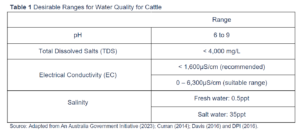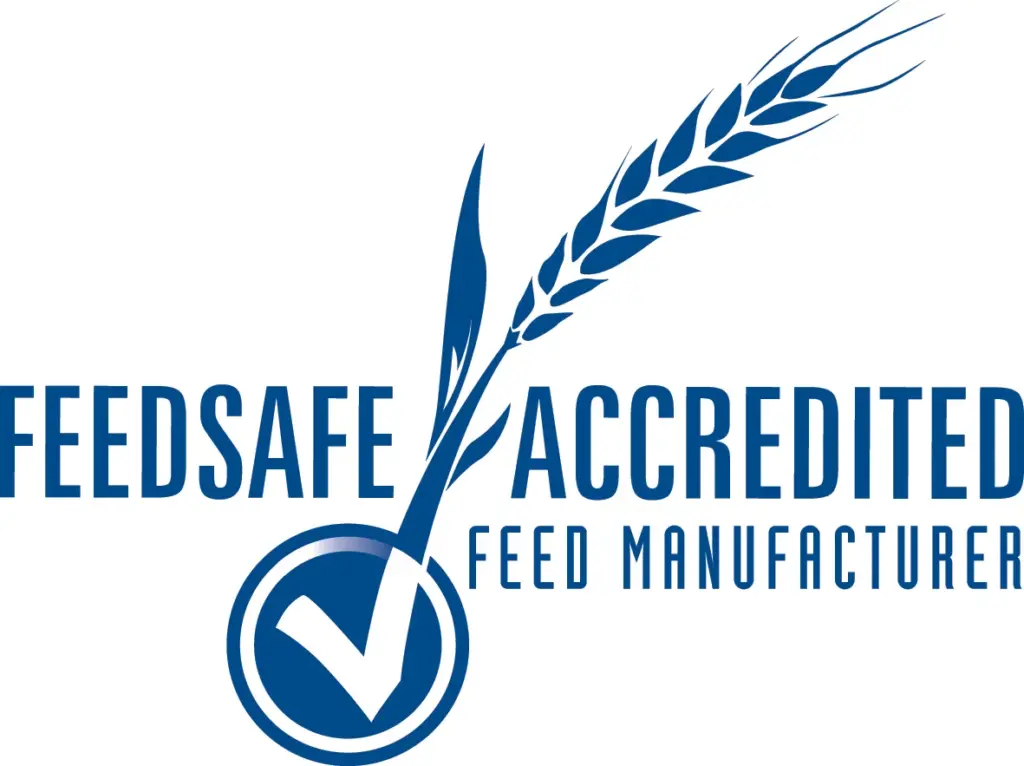Authored by: Dr. Eliéder Prates Romanzini, Sarah Mcilveen
The DIT AgTech Research Team recently completed a Water Preference Research Trial, conducted in conjunction with CQUni, which delved into beef cattle’s water consumption patterns, comparing preferences for varied amount of water supplements versus straight fresh water (Romanzini, et al. (2024 – Paper submitted for publish)). The goal of the trial was to discern how water quality and supplemented water affects drinking behaviour in cattle and show how tools like the DIT AgTech uDOSE™️ system can enhance productivity based on these preferences.
The trial was performed in two locations – at Wilburra Downs Beef Research Station in Richmond, QLD and at CQUni in Rockhampton, QLD. Wilburra Downs represented a commercial setting comparable to livestock enterprises in Northern Australia, while CQUni implemented a feedlot-based scenario. In each setting, all troughs provided ideal water quality (as indicated in Table 1), and all findings from the trial were subject to rigorous, independent peer review.
The importance of water quality
Water quality and availability of clean and uncontaminated water is vital for hydration, rumination, and overall health of livestock. Water with a pH around 7 is considered neutral, and cattle typically drink water with a pH ranging from 6 to 9. However, as the pH approaches 9, water quality diminishes, leading to potential microbial issues and elevated levels of calcium and magnesium, which can cause crystallisation in water lines. Providing contaminated water or water outside the desirable pH ranges (see Table 1) can create dehydration, reduced feed intake, digestive issues, reduced growth rates, and susceptibility to diseases.
Moreover, clean water is essential for thermoregulation, particularly in hot climates or during stressful events like mustering and weaning, helping to mitigate heat stress and maintain performance levels. Livestock are sensitive to water taste and odour, emphasising the importance of providing palatable water to prevent refusal to drink.

KEY FINDINGS
1. The results consistently showed no statistical preference among steers for either fresh or supplemented water.
DIT AgTech supplements are typically formulated with a slightly acidic pH, and when the products are introduced to fresh water, they typically lower the water pH to the acidic range (below 7) on the pH scale. While this may occasionally fall below the optimal range for livestock consumption, the animals at both Wilburra Downs and CQUni did not shy away from the water source when supplemented water was introduced and maintained adequate levels of water consumption.
At Wilburra Downs, data revealed no significant change in water consumption when animals had access to fresh and supplemented water troughs, compared to access to only supplemented water troughs. The same analysis was concluded at CQUni, where steers drank similar amounts of fresh water and supplemented water when kept in feedlot based systems. These findings suggest that animals will consume supplemented water at similar rates, even when fresh water is available.
2. The primary factor influencing water preference was largely attributed to learned behaviour.
At Wilburra Downs, it was observed that the cattle were more likely to return to the water troughs they had previously known to contain clean water, and they tended to follow herd leaders to their preferred drinking spots. When differences were recorded in preferences between fresh and supplemented waters, it was largely attributed to these learned behaviours influencing their water choice; more so than the introduction of the two supplemented troughs.
At CQUni, steers were given access to both supplemented and fresh water at the same time to prevent the learned behaviour observed at Wilburra Downs.
In conclusion
As an leader in livestock water supplementation and productivity, validating common assumptions around animal drinking behaviour and gaining greater understanding of what drives water preferences (from water quality to animal behaviour) is crucial. The Water Preference Research Trial provided our team with valuable insights into the water consumption of cattle.
Despite the differences in settings across the two locations of the trial, the results consistently showed that animals continue to maintain adequate water consumption when DIT AgTech supplements are introduced. Additionally, the research found that, in the absence of learned behaviour driving preference, animals will continue to consume supplemented water at similar rates, even when fresh water is available. This further validates the effectiveness of our uDOSE™️ precision water supplementation system as a verified way to deliver vital nutrients to livestock via on-farm water infrastructure.
These findings also determined the importance of providing clean and accessible water sources for livestock, regardless of supplementation or environmental factors, to ensure optimal health and performance.

Image: Wilburra Downs Beef Research Station in Richmond, QLD
References
An Australia Government Initiative, 2023. Livestock drinking water guidelines. Australian and New Zealand, Guidelines for Fresh & Marine Water Quality. 1 –54. Available at: https://www.waterquality.gov.au/sites/default/files/documents/livestock-drinking-water-guidelines-draft.pdf [Accessed 17 January 2024].
Australian and New Zealand Environment and Conservation Council (ANZECC) & Agriculture and Resource Management Council of Australia and New Zealand (ARMCANZ), 2000. Australian and New Zealand Guidelines for Fresh and Marine Water Quality. Volume 1, Chapter 4. Available at: https://www.waterquality.gov.au/sites/default/files/documents/anzecc-armcanz-2000-guidelines-vol1.pdf [Accessed 19 February 2024].
Curran, G. NSW Government, Department of Primary Industries. 2014. Water for livestock: interpreting water quality tests. Primefact 533, 2nd edition, 1-4. Available at: https://www.dpi.nsw.gov.au/__data/assets/pdf_file/0018/111348/water-for-livestock-interpreting-water-quality-tests.pdf [Accessed 19 February 2024].
Davis, R. 2016. 5. Water Quality. Feedlot Design and Construction, 1-13. [Accessed 17 January 2024].
Department of Primary Industries and Regional Development, 2016. Water Quality for Livestock. Agriculture and Food. [Accessed 17 January 2024].
Meat & Livestock Australia, 2012. National Guidelines for Beef Cattle Feedlots in Australia 3rd Edition. Available at: https://futurebeef.com.au/wp-content/uploads/National-guidelines-for-beef-cattle-feedlots-in-Australia-third-edition.pdf [Accessed 19 February 2024]



